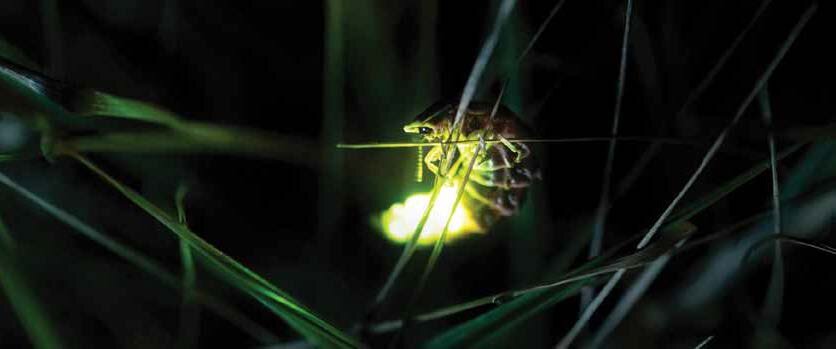Year of the Beetle: Lightning Bugs and Fireflies; the Harbingers of Summer
It’s an American summertime tradition as dear as apple pie and baseball; children venturing out into backyards and open fields after the heat of the day, waiting impatiently for the evening’s magic show to begin. With bare hands and butterfly nets, giggling kids race across the grass to capture a few of Nature’s tiny Tinkerbells to light up nightstand Mason jars when their parents finally call them inside to bed.
Though they lack the hard exoskeleton of other beetles, fireflies and their allies belong to the same Coleoptera order that includes lady bugs, click beetles, weevils and scarabs. What makes them uniquely obvious and charismatic to the casual observer is the ability of some species to flash bioluminescent light from specialized organs in their abdomens.
There are 81 known species of lightningbugs (Lampyridae) in eastern North America. In North Carolina, 30-40 species have been identified, including the famous synchronous fireflies of the Blue Ridge Mountains and the blue ghosts of the southern Appalachians.
You don’t have to travel far to see fireflies in rural and suburban communities, especially if suitable habitat is available and pesticide use is minimal or non-existent. In their larval stage, fireflies need areas with dead leaves and thick vegetation. Home gardeners will be happy to know that firefly larvae are voracious predators that feed heavily on snails and slugs. In the adult form, most fireflies forego food and focus on finding a mate.
Which brings us back to the kids in the backyard catching fireflies as they flash across the lawn. Males and females flash back and forth to find one another in the darkness. Fireflies also use this bioluminescence to warn would-be predators off. Chemical compounds within the bugs make them quite distasteful to birds, toads, bats and other insect-eating critters.
If you’re like most folks and you love seeing fireflies on midsummer nights, don’t put them in your mouth, make sure kids release them back into the great outdoors after enjoying them for a night, let some areas of your yard stay vegetated and unraked, and limit the use of pesticides, bug zappers and fly traps.
It’s an amazing world out there so get outside this evening and watch the show.

